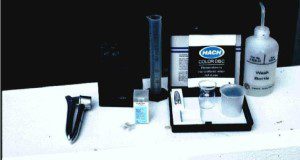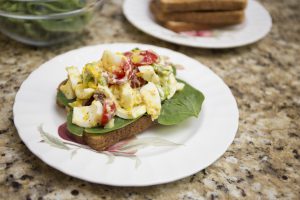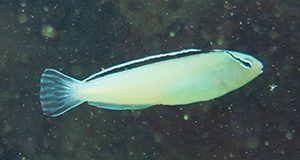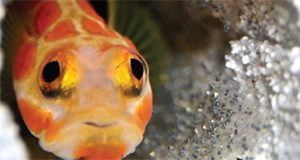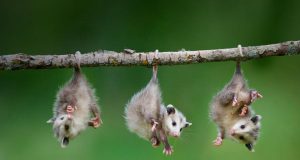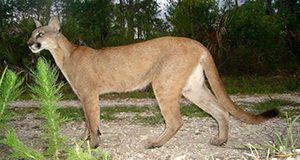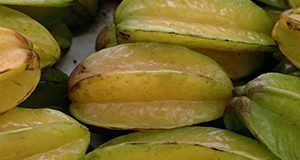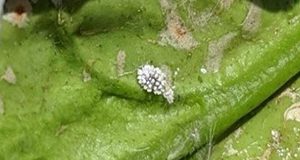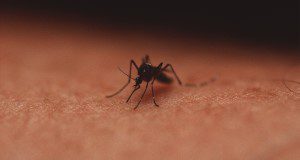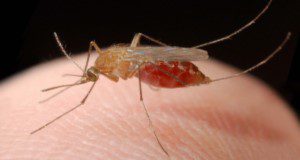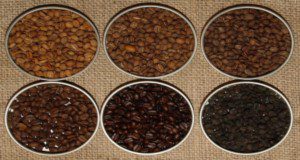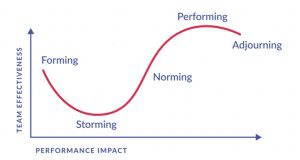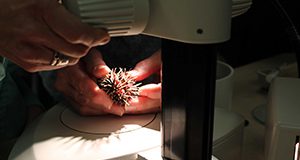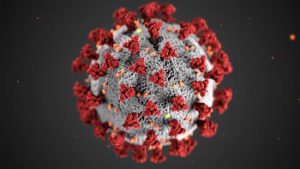A medida que los productores y consultores comienzan a usar la tecnología de monitoreo de savia, surgen preguntas sobre los procedimientos del monitoreo de savia. Las siguientes guías deberían ayudar a las personas que actualmente usan o están interesadas en usar el monitoreo de savia. La mayoría de estas guías se han desarrollado a través de investigaciones en Florida, o se basan en la experiencia de campo.
This is the Spanish translation of CIR1144/CV004, Plant Petiole Sap-Testing For Vegetable Crops. Written by George Hochmuth, translated by Maria Paz Kinslow, and published by the UF/IFAS Horticultural Sciences Department.
https://edis.ifas.ufl.edu/hs1368
COAST: A Comprehensive Older-Adult Screening Tool
Nutrition risk screening is a first step to quickly identify individuals who might be malnourished or at risk of malnutrition. A malnutrition screening tool should be easy to use, quick to administer, and valid—able to correctly identify those at risk of malnutrition. The Comprehensive Older Adult Screening Tool (COAST) is a valid and practical tool to determine if community-dwelling older adults, specifically older adults of lower socioeconomic status, are at risk for malnutrition. This new 6-page publication of the UF/IFAS Food Science and Human Nutrition Department, written by Karima Alabasi, Nancy J. Gal, and Wendy J. Dahl, provides an introduction to COAST as well as the 5-question screening tool.
https://edis.ifas.ufl.edu/fs393
COAST-ES: Herramienta integral de tamizaje para adultos mayores
El tamizaje (cribado) del riesgo nutricional es un primer paso para identificar rápidamente a las personas que pueden estar desnutridas o en riesgo de desnutrición. Una herramienta de tamizaje de detección de desnutrición debe ser fácil de usar, rápida de administrar y válida para poder identificar correctamente a las personas en riesgo de desnutrición. La Herramienta Integral de Tamizaje de Adultos Mayores (COAST, por sus siglas en inglés) es una herramienta váida y práctica para determinar si los adultos mayores que viven en la comunidad están en riesgo de desnutrición.
This is the Spanish translation of FSHN20-37/FS393, COAST: A Comprehensive Older-Adult Screening Tool. Written by Karima Alabasi, Nancy J. Gal, and Wendy J. Dahl, translated by Daniela Rivero Mendoza, and published by the UF/IFAS Food Science and Human Nutrition Department.
https://edis.ifas.ufl.edu/fs396
Aquaculture applications of the Family Blenniidae
Marine ornamental fish production is still in its infancy compared with its freshwater counterpart. About 1,800 wild-caught fish species are imported into the United States each year, clear proof of the need for the expansion of marine ornamental production to include new species and families of fish. Distinct behavior and a wide range of colors makes fish from the Blenniidae family, called blennies, a popular choice in the aquarium hobby. These hardy fish are small and rarely aggressive to other reef species and they eat algae and clean tank substrate. This 6-page fact sheet written by Jesse Von Linden, Joshua T. Patterson, Cortney L. Ohs, and Matthew A. DiMaggio and published by the UF/IFAS Program in Fisheries and Aquatic Sciences, School of Forest Resources and Conservation provides a brief overview of the family including description and taxonomy, natural history, culture techniques, a bit about disease challenges, and advice on marketing for ornamental Blennids.
https://edis.ifas.ufl.edu/fa225
Aquaculture Applications of the Family Gobiidae
Marine ornamental fish production is still in its infancy compared with its freshwater counterpart. About 1,800 wild-caught fish species are imported into the United States each year, clear proof of the need for the expansion of marine ornamental production to include new species and families of fish. The family Gobiidae is the fourth most imported family of marine ornamental fish. Gobies can be easily housed with a variety of other species of fish. Several have qualities that lend themselves to aquarium life. Some clean other fish and others sift the sand bed. Many naturally perch on the rockscape or corals, spending their time beautifying their surroundings with their bright colors and intriguing behavior. This 7-page fact sheet written by Jesse Von Linden, Joshua T. Patterson, Cortney L. Ohs, and Matthew A. DiMaggio and published by the UF/IFAS Program in Fisheries and Aquatic Sciences, School of Forest Resources and Conservation provides a brief overview of the family including description and taxonomy, natural history, culture techniques, a bit about disease challenges, and advice on marketing for ornamental Gobids.
https://edis.ifas.ufl.edu/fa226
Wildlife of Florida Factsheet: Virginia Opossum
Learn more about the Florida opossum!
The Wildlife of Florida Factsheet series was created to provide the public with a quick, accurate introduction to Florida's wildlife, including both native and invasive species. Authors Simon Fitzwilliam and Raoul Boughton hope this 2-page quick guide and others in the series published by the UF/IFAS Department of Wildlife Ecology and Conservation will inspire readers to investigate wildlife in their own backyards and communities and understand the amazing biodiversity of wildlife in the state of Florida.
https://edis.ifas.ufl.edu/uw471
Hurricane Toads
Eastern spadefoots are a common but largely unappreciated species of native toad in Florida. Following torrential rains they emerge from hiding and breed in shallow pools. In as little as 14 days, hordes of raisin-sized froglets emerge and hop away in all directions from the pond or puddle where they were born. Some of them find their way to yards and garages of suburban neighborhood homes. Other unlucky baby toads end up on roads, where they are smashed. This 5-page fact sheet written by Steve A. Johnson and Candace D. Fuhrmann and published by the UF/IFAS Department of Wildlife Ecology and Conservation outlines the unique biology of this species and explains how to identify eastern spadefoot tadpoles, young, and adults. It also includes a section on how you and your friends and family can help these interesting and attractive little creatures by engaging in citizen science.
https://edis.ifas.ufl.edu/uw474
Wildlife of Florida Factsheet: Florida Panther
Learn more about the Florida Panther!
The Wildlife of Florida Factsheet series was created to provide the public with a quick, accurate introduction to Florida’s wildlife, including both native and invasive species. Authors Kelly Koriakin and Raoul Boughton hope this 2-page quick guide and others in the series published by the UF/IFAS Department of Wildlife Ecology and Conservation will inspire readers to investigate wildlife in their own backyards and communities and understand the amazing biodiversity of wildlife in the state of Florida.
https://edis.ifas.ufl.edu/uw467
Sample Profitability and Cost Estimates of Producing Sweet Flavored Carambola (Averrhoa carambola) in south Florida.
This 7-page fact sheet written by Fredy H. Ballen, Aditya Singh, Edward A. Evans, and Jonathan H. Crane and published by the UF/IFAS Food and Resource Economics Department reports the costs and returns of operating an established sweet-flavored carambola grove in south Florida. It is intended to provide a reference to help estimate the financial requirements of running an established grove. Information was collected through field interviews with growers and industry specialists about a wide range of production practices used on small farms of five acres or fewer.
https://edis.ifas.ufl.edu/fe1079
Citrus Pest Quick Guide: Lebbeck Mealybug Nipaecoccus viridis (Newstead)
A one-page quick guide written by Lauren M. Diepenbrock and Jamie D. Burrow and published by the Entomology and Nematology Department presents the life cycle of the lebbeck mealybug and provides several photos of the pest and the damage it causes to assist in identification.
https://edis.ifas.ufl.edu/in1280
Florida Fishing Guide Requirements Checklist

Guides and captains maintaining vessels used for recreational fishing are an important part of coastal economies, but regulations affecting them can be complicated and may differ depending on several factors, including targeted species, number of customers, vessel size, etc. These regulations are often described in multiple locations, since for-hire guides operate at the intersection of multiple state and federal jurisdictions. This 3-page fact sheet written by Elizabeth A. Staugler, Ralph Allen, and Edward V. Camp and published by the UF/IFAS School of Forest Resources and Conservation, Program in Fisheries and Aquatic Sciences summarizes the relevant regulations and requirements.
https://edis.ifas.ufl.edu/fa218
Overview of Commonly Cultured Marine Ornamental Fish
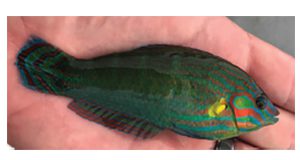
The production of freshwater ornamental fish dominates the ornamental aquaculture industry, yet the small marine ornamentals sector has grown substantially in recent years. This 7-page fact sheet written by Elizabeth M. Groover, Matthew A. DiMaggio, and Eric J. Cassiano and published by the UF/IFAS Program in Fisheries and Aquatic Sciences, School of Forest Resources and Conservation briefly reviews the more common groups of marine ornamental fishes cultured in the United States. As we learn more about marine ornamentals and as aquaculture protocols for marine ornamentals develop and improve, it is possible that more species may become economically feasible to produce and more cultured marine fish may begin to supplement wild-caught stocks in the marine aquarium trade.
https://edis.ifas.ufl.edu/fa224
Understanding Public Perceptions of Mosquito-Related Information Sources and Adapting Research Findings to the Needs of Industry Professionals
The Prevent & Protect publication series focuses on the creation of different material formats to resonate with various audiences and ways to maximize their efficacy in communicating risk to the public about mosquito control. The overview of the Prevent & Protect project, developed by the UF/IFAS Center for Public Issues Education in Agriculture and Natural Resources (PIE Center), can be found in EDIS publication AEC694/WC357, Public Perceptions of Mosquitoes and Mosquito Control. This new 3-page document describes the importance of understanding and adapting to public perceptions of information sources and how scientists can adapt their research findings based upon the needs of professionals in the field to create usable outreach materials. Written by Shelli Rampold, Ricky Telg, Alena Poulin, Sandra Anderson, Angela B. Lindsey, Ashley McLeod-Morin, and Phillip Stokes, and published by the UF/IFAS Department of Agricultural Education and Communication.
https://edis.ifas.ufl.edu/wc358
Public Perceptions of Mosquitoes and Mosquito Control
The Prevent & Protect publication series focuses on the creation of different material formats to resonate with various audiences and ways to maximize efficacy in communicating about mosquito-related risks and mosquito control topics to the public. This new 3-page publication of the UF/IFAS Department of Agricultural Education and Communication provides a background of public opinion on various aspects of mosquito control covered in the Prevent & Protect campaign. Written by Shelli Rampold, Ricky Telg, Alena Poulin, Sandra Anderson, Angela B. Lindsey, Ashley McLeod-Morin, and Phillip Stokes.
https://edis.ifas.ufl.edu/wc357
Small-to-Medium-Scale Sensory Evaluation of Horticultural Crops: Measuring Responses
When measuring the responses of panelists, the main principle behind sensory evaluation, a variety of sensory tests can be used. This new 4-page publication is the second in a series designed to assist producers in the small-to-medium-sized sensory evaluation of their horticultural crops, outlining the types of data and sensory measurement techniques utilized in sensory evaluation. Written by Sean Michael Campbell and Charles A. Sims, and published by the UF/IFAS Environmental Horticulture Department.
https://edis.ifas.ufl.edu/ep582
Icebreakers for Adults
Building rapport is key when creating a team culture. As groups change over time, it is imperative to continually reintroduce and reacclimate new team members to long-standing teammates. Leaders of groups that undergo constant change, like those whose jobs involve volunteers, may find it challenging to find innovative ways to bring people together. Icebreakers are quick, low- or no-cost activities that allow individuals to get to know the people around them and serve as a means to build trust and openness in a low-stakes environment. This new 3-page publication of the UF/IFAS Department of Agricultural Education and Communication outlines strategies to use when building a team culture and gives examples of simple activities to build cultures within teams or groups. Written by Megan Stein and Taylor Nash.
https://edis.ifas.ufl.edu/wc356
An Overview of Key Soil Nitrogen Cycling Transformations
Although nitrogen (N) is one of the most abundant elements in the biosphere, it is generally at levels that are limiting for optimum plant growth and crop production in Florida soils. To maintain adequate N levels in Florida soils without having detrimental environmental side effects, one must understand and manage N cycling transformations and processes. This new 5-page article, published by the UF/IFAS Department of Soil and Water Sciences, provides an overview of the N cycle by describing key N transformations that result in soils gaining or losing N. The biotic and abiotic processes that govern these transformations are described, as well as practical examples of these transformations in Florida soils. Written by Clayton J. Nevins, Sarah L. Strauss, and Patrick Inglett.
https://edis.ifas.ufl.edu/ss684
Opportunities and Obstacles to Aquaculture in Florida
Aquaculture is growing in Florida as it is worldwide, but in Florida aquaculture has not yet reached its substantial potential. To understand why this might be, the University of Florida's Institute of Sustainable Food Systems organized and convened a meeting between small-agency, industry, and academic stakeholders to discuss the opportunities and obstacles to aquaculture in Florida. This 6-page fact sheet written by Edward Camp, Taryn Garlock, and James Anderson and published by the UF/IFAS School of Forest Resources and Conservation, Program in Fisheries and Aquatic Sciences, describes the proceedings of this meeting in the context of the broader scientific literature explaining why aquaculture ventures do and sometimes do not succeed.
https://edis.ifas.ufl.edu/fa221
Diagnostic Methods for the Comprehensive Health Assessment of the Long-Spined Sea Urchin, Diadema antillarum
This 55-page document contains a wealth of information on the long-spined sea urchin, which is an important animal in coral reef ecosystems. The publication discusses diagnostic methods for Diadema antillarum and provides reporting forms for laboratory and diagnostic work. Written by Ruth Francis-Floyd, Jan Landsberg, Roy Yanong, Yasu Kiryu, Shirley Baker, Deborah Pouder, William Sharp, Gabriel Delgado, Nicole Stacy, Tom Waltzek, Heather Walden, Roxanna Smolowitz, and Greg Beck, and published by the UF/IFAS Veterinary Medicine—Large Animal Clinical Sciences Department, May 2020.
https://edis.ifas.ufl.edu/vm244
COVID-19 and Food Safety FAQ: Is Coronavirus a Concern at Grocery Stores? (Mandarin Chinese)
This is the Mandarin Chinese translation of FSHN20-20/FS348, COVID-19 and Food Safety FAQ: Is Coronavirus a Concern at Grocery Stores? It provides answers to a few frequently asked questions regarding COVID-19 and grocery stores. Written by Natalie Seymour, Mary Yavelak, Candice Christian, and Ben Chapman, and published by the UF/IFAS Food Science and Human Nutrition Department.
https://edis.ifas.ufl.edu/fs391
